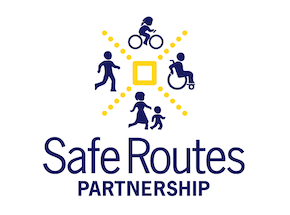The Livability in Transportation Guidebook’s primary purpose is to illustrate how livability principles have been successfully incorporated into transportation planning, programming, and project design, using examples from State, regional, and local sponsors, applicable in urban, suburban, and rural areas.
Through active transportation, parks and recreation agencies provide valuable benefits to communities by providing an engine for economic development, increasing health and wellbeing, supporting conservation and providing benefits to all citizens regardless of socioeconomic status.
This report examines some of the states that have successfully dedicated federal safety funds to reducebicycle and pedestrian fatalities and crashes.
This planning manual illustrates why planning for transit-oriented development that serves families is important for creating complete communities and how such integrated planning can be achieved.
School districts are responsible for the education of almost 50 million public school students. This report identifies the larger community interest in decisions about retaining existing schools and deciding where to locate new ones.
This toolkit provides materials that state advocacy organizations can use to ensure state
Departments of Transportation (DOTs) take full advantage of the potential bicycling and
walking funding in MAP-21.
This report offers more precise benchmarks and recommendations for advocates and government officials so that they have the data they need to improve bicycling and walking in the United States and eventually all of North America.
This guide is intended to help demystify regional transportation plans (RTPs), explain key components and requirements, identify ways to incorporate health‐promoting strategies into RTPs, and showcase short case studies of improving community health through RTPs.
This report describes trends and policy implications for active transportation in rural communities.
This paper describes ways to evaluate the value of walking (the activity) and walkability (the quality of walking conditions, including safety, comfort and convenience).

